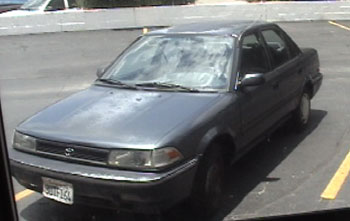One size no longer fits all. I was thinking of this while posting to a message board I frequent from time to time. My post was specifically about supermarkets, and my assertion was that there basically is no such thing as a “one size fits all” supermarket chain anymore. This turns out to be true for many other aspects of pop culture today too.
When I was a kid, there were certain aspects of popular culture that almost everyone shared, among them shopping, entertainment, and phone service. The segregation that lingered into the 1960s was over, at least in theory, and the stifling conformity of the 1950s Tea and Sympathy era had been somewhat minimized (the subject of yet another rant I’m working on), but some things were still dang nigh universal.
As late as the 1980s, the vast majority of people in the vast majority of places shopped at one of two or three largely indistinguishable chain supermarkets. Each of them served more or less the same demographic, that being shoppers who needed groceries. There were some mild variations in selection and price, but nothing that really set one apart from the other. You could get what you wanted at any of them, and it would all end up costing, smelling, and tasting pretty much the same.
That era of grocery retailing is over. Now, we have high-end chains like Whole Foods (and numerous regional variants) and low-end chains like Wal-Mart Supercenter. In between are any number of steps specializing in produce, meat, prepared food, or whatever. There are ethnic-oriented supermarket chains and small retailers like Dean and Delucca. Going to the store has taken on extraordinary layers of complexity.
The trend has carried through to other retail as well. The large regional malls of my youth were sort of one-stop shopping centers, where people could purchase most of their necessities. There was invariably at least one supermarket on the periphery, and the mall itself always contained a drug store and a dime store in addition to the department and specialty stores. All bases were covered.
That’s not how malls work anymore. The large regional centers which have survived (many haven’t) are almost exclusively focused on “upscale” boutiques now. There is nothing mass-market, like a cafeteria or a drugstore. It’s all high-end clothing, with the occasional high-end housewares or gadget store thrown in. Malls are no longer places where the daily necessities of life are acquired, and they are no longer places where you see a cross-section of society. Customers tend to be younger and well-heeled; the only old folks you see are the ones who come there to walk before the stores open.
I talked about the irrelevance of the big three networks’ evening news shows recently. You could pretty much extend that classification to the big three networks’ programming in general. No one cares anymore; I couldn’t tell you what comes on what night anymore except for the Fox animation block on Sunday nights. Those three or four networks just don’t stand out very much in world of 200-channels plus video-on-demand.
Narrowcasting with respect to music is even more severe. There once was something called top 40 Radio in America. It wasn’t what everyone liked. It may not have been what anyone liked. But everyone was familiar with its contents. Through the 1970s, the top 40 was so ubiquitous that almost no one, young, old, black, white, or brown wasn’t at least familiar with a large proportion of it.
That’s not the case anymore either. Sometime in the mid-1980s, things started getting almost obsessively genre-specific, most likely as a result of the increasing portability of non-radio music devices. There’s still a top 40 and I’m sure a few people still care, but it’s a very specific demographic based on marketing now rather than a merging of multiple genres and demographics based on overall popularity. Most radio stations now spend more on-air time defining their formats (“KZAZ, Z-100. Always seven songs in a row, all upbeat lite rock, with no rap, heavy metal, or songs written by people from Arizona, Maryland, or Georgia.”) than actually playing music.
There’s no more Life Magazine that everyone from hippies to grandmothers reads. AT&T is no longer a universal annoyance. Our automotive choices are no longer limited to GM, Chrysler, and Ford. And a “Congressional consensus” on anything is an oxymoron.
I’m not complaining about all this choice, mind you. I think it’s a good thing, and I’d be hard-pressed to live my life without it. I like not having to listen to crappy music just to get to one good song. I prefer not having to watch “American Idol”. I like that there are carnicerias and other assorted tiendas latinas nearby. And I like my Wal-Mart Supercenter, by god.
A sociology text I read a couple of years ago suggested that increased options and choice, particularly in the form of mobility, had been responsible for many of the ills of urban America in the past fifty years, not to mention our “loss of community”. I think that’s hogwash. I’m all about individualism and I have little use for the term “community”, particularly as it’s generally (ab)used. Choice generally is good, even if it’s sometimes exhausting.
I wonder sometimes, though, how much more fractured our society will ultimately become, and if there are any ill effects involved. As much as I prefer to avoid it myself, people do have to relate on occasion, and a little common ground can be helpful.
